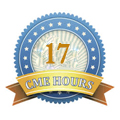
Olivier Materne
Aspire Academy, Qatar
Title: Return to Play after Injury in Youth Soccer: Where Do Growth and Maturation Fit into The Picture?
Biography
Biography: Olivier Materne
Abstract
Traumatic injury related to youth soccer has been widely described in the literature (Rumpf and Cronin, 2012), but scientific evidence on growth and maturation associated to epidemiological figures is still lacking (Faude et al., 2013). Adirim and Cheng (2003) reported that children engaged in sports involving activities such as jumping and cutting are at greater risk of growth related diseases. This type of problem is described as an overuse condition caused by the repetitive stress on the growth cartilage (DiFiori et al., 2014). In elite youth soccer, few studies have reported comprehensively on growth related injuries (Le Gall et al., 2006, Moore et al., 2012). This epidemiology report provides an outline of injuries associated with growth and maturation. Different to other literature, our study (Materne et al., 2016) demonstrated more growth related injuries, less muscle injuries and a peak injury incidence in the U15. Injury free survival analysis showed a substantial greater hazard ratio for players during peak height velocity, suggesting that somatic maturation is a potential risk factor. Although incidence of traumatic injuries was greater in different maturity status groups, overuse injuries resulted in a longer lay-off. The potential detrimental effect of injury during the growth spurt, resulting in a long lay-off, should encourage load monitoring, variety in the training programme and appropriate recovery periods in the development programmes of adolescent players. Further longitudinal research is required to continue to explore injury risk, and injury rehabilitation to optimise prevention and rehabilitation in elite youth soccer.

